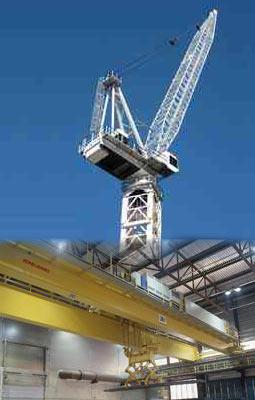 Periodic crane inspection is very vital program to the crane owners for the safe working of the crane and to increase productivity. The effective crane inspection program will increase productivity by reducing downtime due to unexpected breakdown, reduce insurance cost, comply to Australian Standards and State OH&S Departments, roadworthy acceptance, assist in quick acceptance by major construction sites and associations, mining companies, major contractors, will be legally defendable case for Owners “duty of care”.
Periodic crane inspection is very vital program to the crane owners for the safe working of the crane and to increase productivity. The effective crane inspection program will increase productivity by reducing downtime due to unexpected breakdown, reduce insurance cost, comply to Australian Standards and State OH&S Departments, roadworthy acceptance, assist in quick acceptance by major construction sites and associations, mining companies, major contractors, will be legally defendable case for Owners “duty of care”.
The objectives of crane inspection are to promote the safety and health of persons in the workplace and of the public, comply with occupational health and safety legislations, limit the potential damage to property, reduction or elimination of risk associated with the crane operations, determine the condition of the crane parts, detect potential failures at early stages, reduce the risk of injury by potential failure and increase the crane life. The crane inspection ensures that the crane is in a safe condition and it can continue to be used for a specified period into the future. The frequency of inspection of crane and its various parts is specified in AS 2550.1. CICA and CraneSafe (a division of the Crane Industry Council of Australia) also provide guidelines on crane inspection.
LMATS Melbourne and Sydney laboratories comprises a team of qualified Inspectors, Metallurgist, Engineers, Scientists, Engineering Technologists and Non-destructive testing Technologists.
The combination of these professionals from different speciality areas ensures that the crane owners are benefited by implementation of most cost effective inspection regime that will comply to the local regulatory requirements. LMATS Melbourne and Sydney laboratories performs independent thorough visual inspection followed by eddy current test, ultrasonic test without the need of removal of protective coating (expensive decorative paint). In certain circumstances, when there is a doubt about the subsurface or obscured discontinuity e.g. crack, a magnetic particle examination is performed prior to declaring the unacceptable defect.

